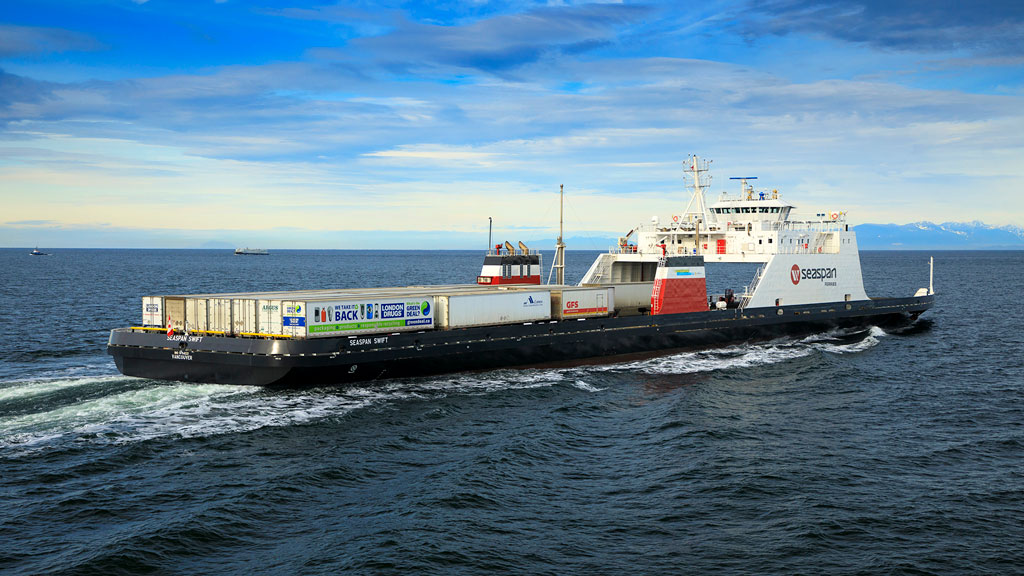VANCOUVER — Seaspan Ferries Corporation has become the first Canadian marine company to test the use of Renewable Natural Gas (RNG) to cut greenhouse gas emissions created by its roll-on, roll-off liquefied natural gas (LNG) powered marine fleet.
According to Seaspan, the data from the pilot is expected to support predictions that emissions can be reduced by as much as 85 per cent using RNG instead of diesel.
To support its efforts, Seaspan worked with FortisBC to secure a source of certified carbon neutral RNG.
“Renewable Natural Gas, when used in our fleet in conjunction with traditional natural gas, will allow us to move towards our emissions reduction goals and make a real impact on our carbon footprint,” said Harly Penner, director of fleet engineering and vessel development at Seaspan, in a press release. “It also allows us to leverage the growing production of RNG in our region.”
FortisBC’s RNG program reopened to new subscribers on Oct. 15 as the company has been successful in significantly increasing supply over the last year. By the end of 2021, FortisBC expects it will have tripled its RNG supply from 2020 and is poised to possibly triple it again by the end of 2022.
“We know that our future is a renewable one – so when Seaspan approached us about being a part of an RNG pilot for marine LNG vessels, we were tremendously excited,” said Mike Leclair, vice-president, major projects and LNG at FortisBC. “Using Renewable Natural Gas for marine LNG has the potential to be an emissions game changer for the sector and is yet another example of how renewable gas development is transforming our natural gas infrastructure into a delivery system for carbon neutral energy, supporting B.C.’s climate action goals.”
RNG is made after bacteria breaks down organic waste from sources such as landfill sites, agricultural waste and wastewater from treatment facilities. This process produces a biogas mostly made of methane. FortisBC captures and purifies this biogas to create RNG, a certified carbon neutral energy source, stopping the release of methane into the environment. RNG can be mixed into existing natural gas infrastructure to displace natural gas. Like conventional natural gas, RNG can be used as a transportation fuel in the form of compressed natural gas or LNG.






Recent Comments
comments for this post are closed